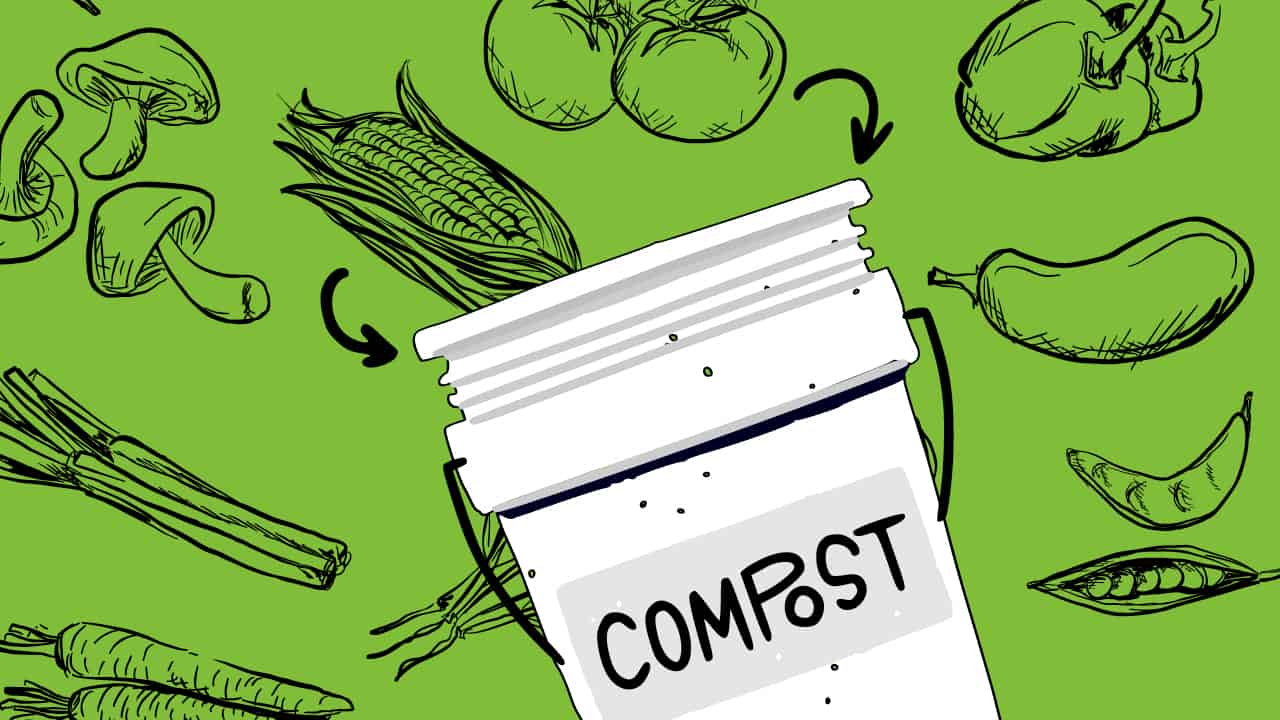Our 5 Best Tips for Sustainable Composting
Soil is the lifeblood of everything that we grow and eat. It sets the foundation for a quality food chain by nourishing the crops and animals that we rely on for food. Nutrient-poor soil is a growing problem around the world and a significant contributor to the declining nutritional value of our produce, as well as mineral deficiencies in people.[1]
One of the most effective ways to boost the nutrient level in food crops is by increasing the amount of organic matter in the soil in which they grow – in other words, adding a natural, quality compost. The good news is that you don’t have to be a farmer to make compost.
Whether you want to start a home garden, are looking to increase the productivity of your existing plants, or are trying to reduce your ecological footprint, home composting is a great step forward.
Along with offering a simple way to keep produce out of landfills, home composting also creates a chemical free-fertilizer for your gardens, lawn, and house plants. With the right know-how, successfully creating and managing compost at home is an easy process. Before you get started, check out these five composting tips.

1. Choose the right composter.
A person with a large yard and garden will have different composting requirements than someone maintaining a potted patio garden. Deciding which type of composting unit to use often comes down to how much space you have and how much compostable material you have to put in it. There are a variety of indoor, outdoor, and neighbourhood composting systems to choose from. Here are four great options:
- Continuous composters are a well-rounded choice for people who want to compost kitchen scraps and yard waste. These large, enclosed bins are kept outdoors and you continuously add to them throughout the year. You can then remove finished compost from the bottom layer a few times per year.
- Batch composters accelerate the composting process (about 8 weeks) but need daily turning and moisture checks. Once these outdoor bins are full and ready to create compost, you need to divert your scraps and waste into a separate bin until the first batch matures.
- Indoor composters are a fantastic option for people who live in apartments and those who are only composting kitchen scraps. They often rely on worms to speed up the decomposing process and need to be kept indoors.
- Multi-bin composters are the go-to choice for anyone with a large property and large quantities of compostable material. By maintaining multiple bins, compost can be mixed from one to the other during each stage of decomposition.
2. Begin with a good base layer.
A good base layer helps your compost start off on the right foot by allowing air to circulate and excess moisture to drain. To create a substantial base layer, place coarse, carbon-rich material, such as leaves, twigs, straw, and corn stalks, at the bottom of your composting unit. From there, you can begin layering.
3. Layer your greens and browns.
Successful composting works in layers of “greens” and “browns”. By alternating nitrogen-rich kitchen scraps and plant trimmings (greens) with carbon-rich materials included in the base layer (browns), you’ll be rewarded with efficient, high-nutrient compost.
Continue feeding your compost with:
- Fruit and veggie peels
- Egg shells
- Coffee grounds and tea leaves
- Tree and shrub trimmings
- Grass clippings and straw
- Leaves
- Manure from grass-eating pets, such as rabbits and horses
- Small pieces of cardboard, newspaper, and napkins
While what you put into your compost is important, it is also critical to leave certain materials out! Do not add:
- Meat, oils, fat, or grease
- Dairy products
- Diseased or invasive plants
- Weeds that go to seed
- Dog, cat, and other non-herbivorous animal feces
- Pressure- or chemically treated wood and paper
4. Water and turn regularly.
Moisture and air play essential roles in decomposition. Unless your compost is regularly exposed to rain, you’ll need to water it lightly when it becomes dry or when you add each new layer of compostable material.
Turn your compost every couple of weeks to incorporate air. This is also an important step for creating heat and reducing odour.
5. Keep the cycle going.
After you’ve set up your composting system, you need to maintain its cycle. Keep feeding your compost with green and brown material. Once it has matured for about 6 months and the bottom layers are well-decomposed, it’s ready to use. Any remaining rocks, sticks, or organic chunks can be sifted out using a mesh or compost screen.
When your compost is ready, spread it:
- Onto your lawn
- Around the base of trees, shrubs, and plants
- Into potted plants and vegetable gardens
- Anywhere you want plants to flourish
A sustainable, secure foundation for nutrition
At Whole Earth & Sea, we know that your health and the environment go hand in hand – and composting is a perfect example of this. Composting creates the soil we need to provide food-producing plants with the micronutrients, water, oxygen, and root support that they need to grow properly. This helps reduce our reliance on chemical fertilizers and sets a sustainable, secure foundation for our health and nutrition.
References:
(1) Hepperly PR, Omondi E, Seidel R. Soil regeneration increases crop nutrients, antioxidants and adaptive responses. MOJ Food Process Technol. 2018; 6(2):196-203.
.png)